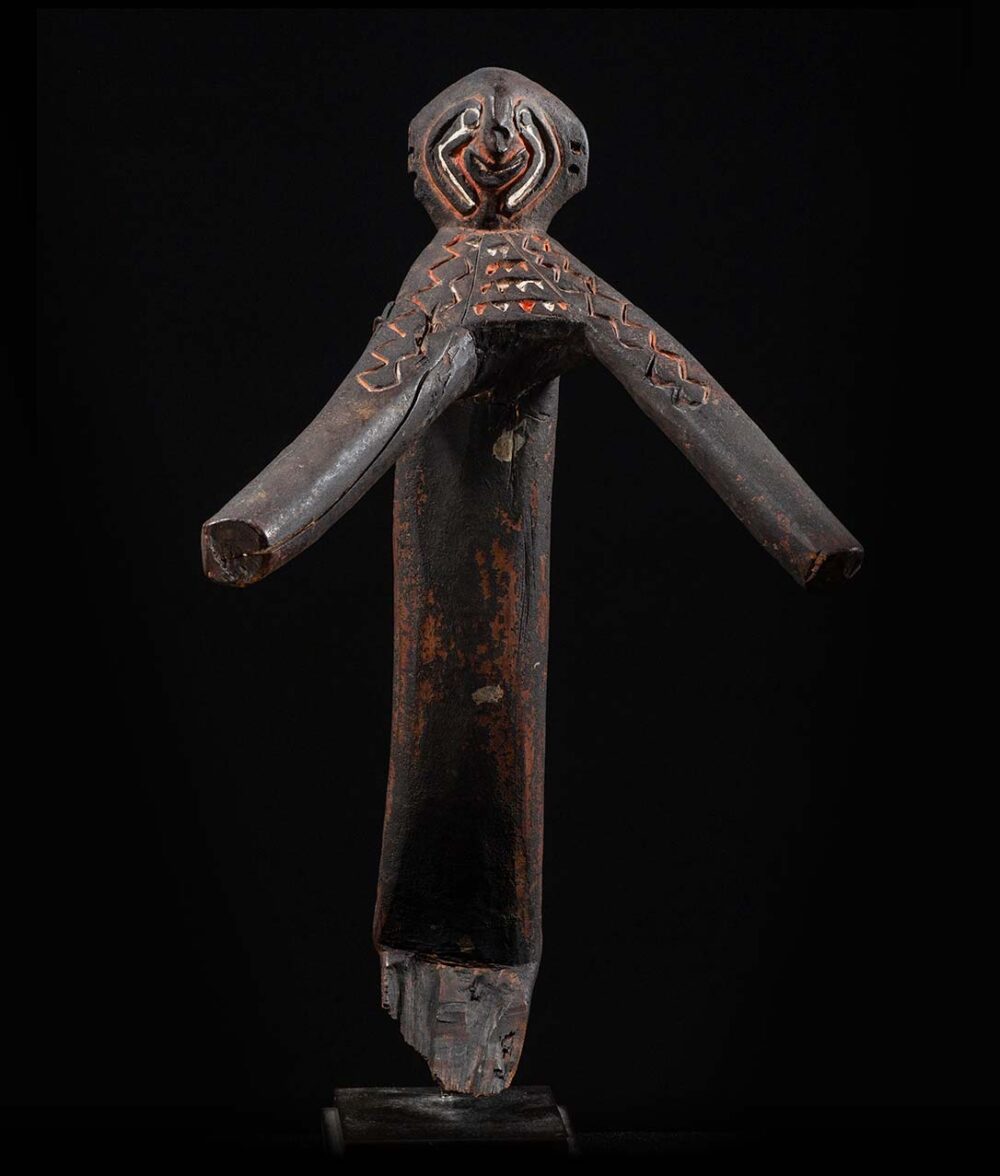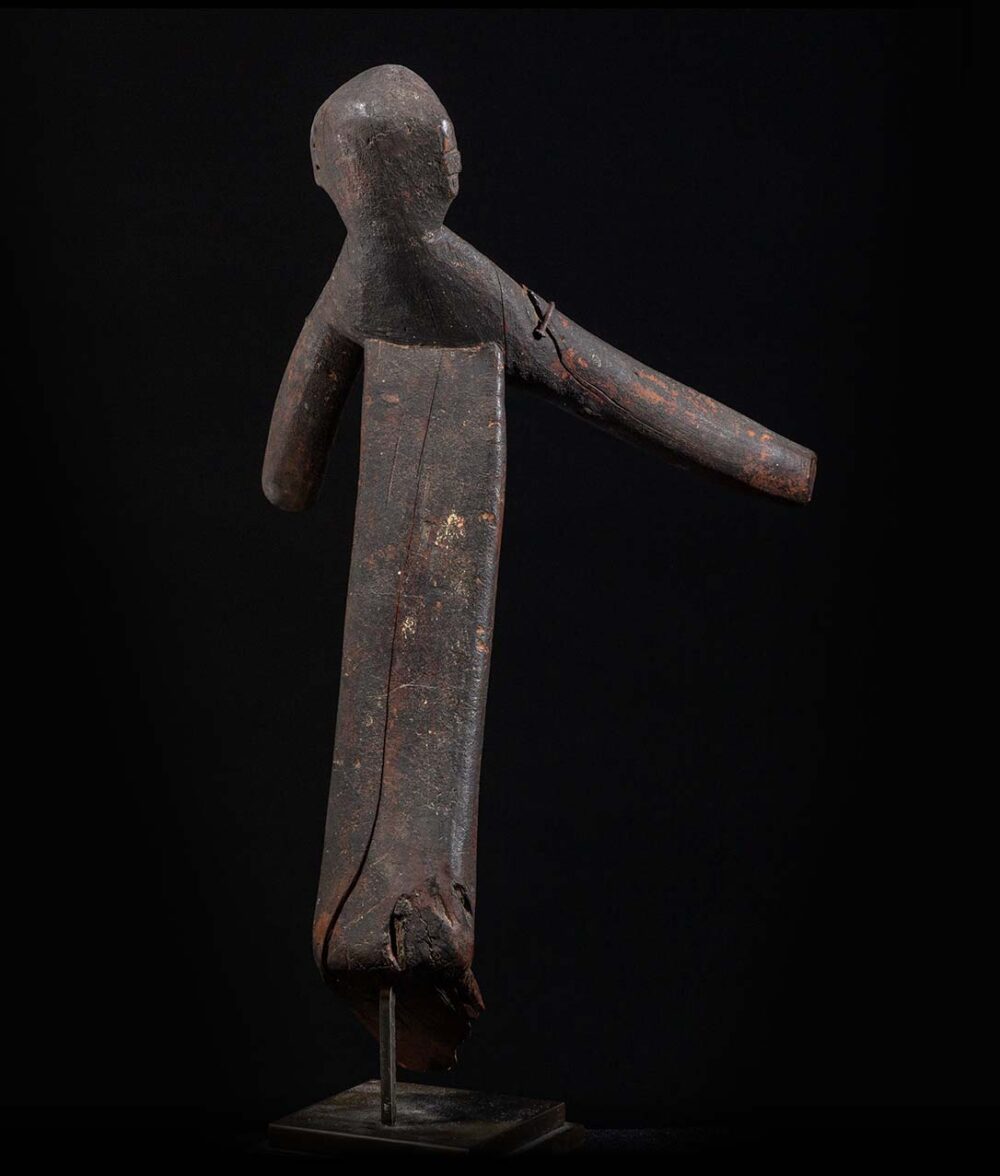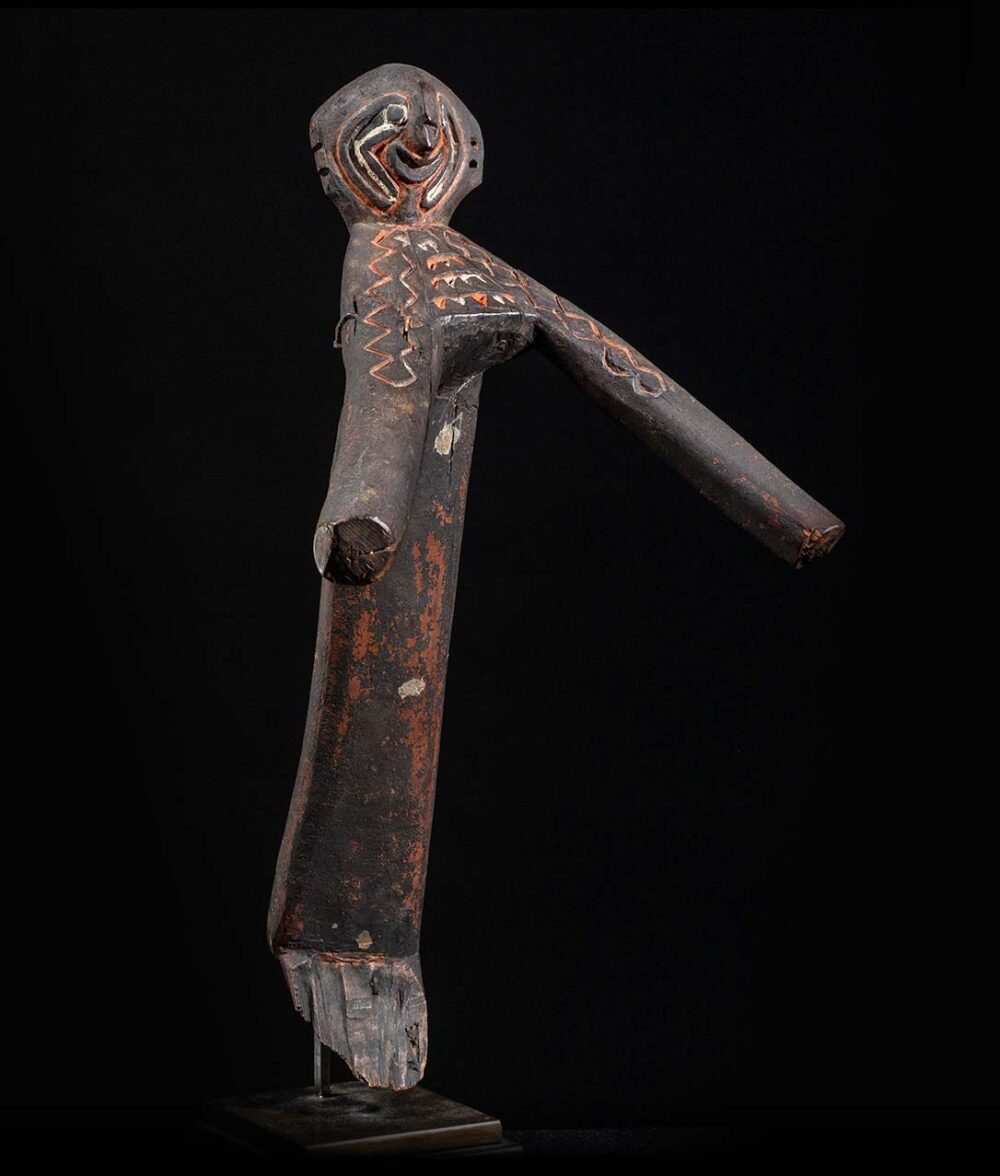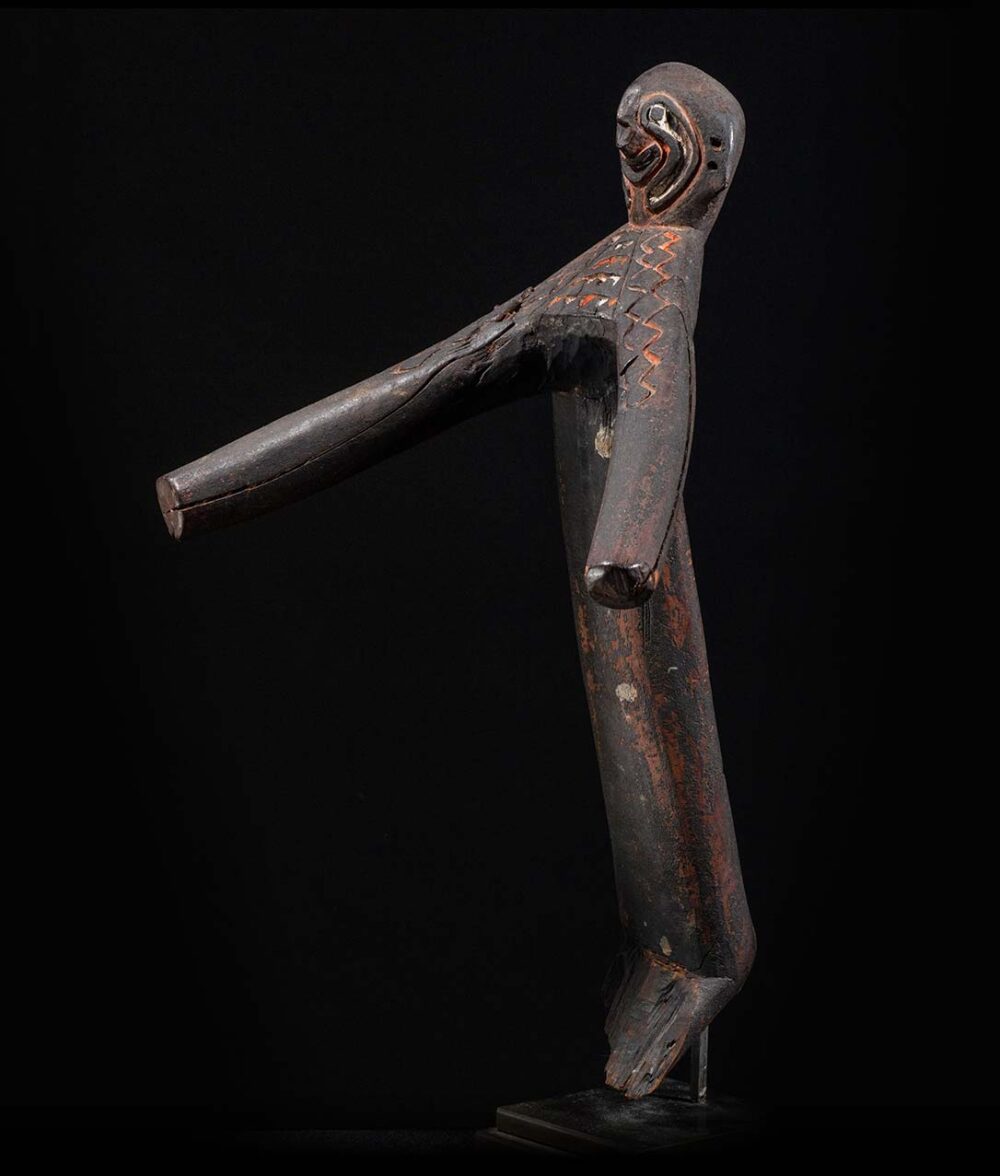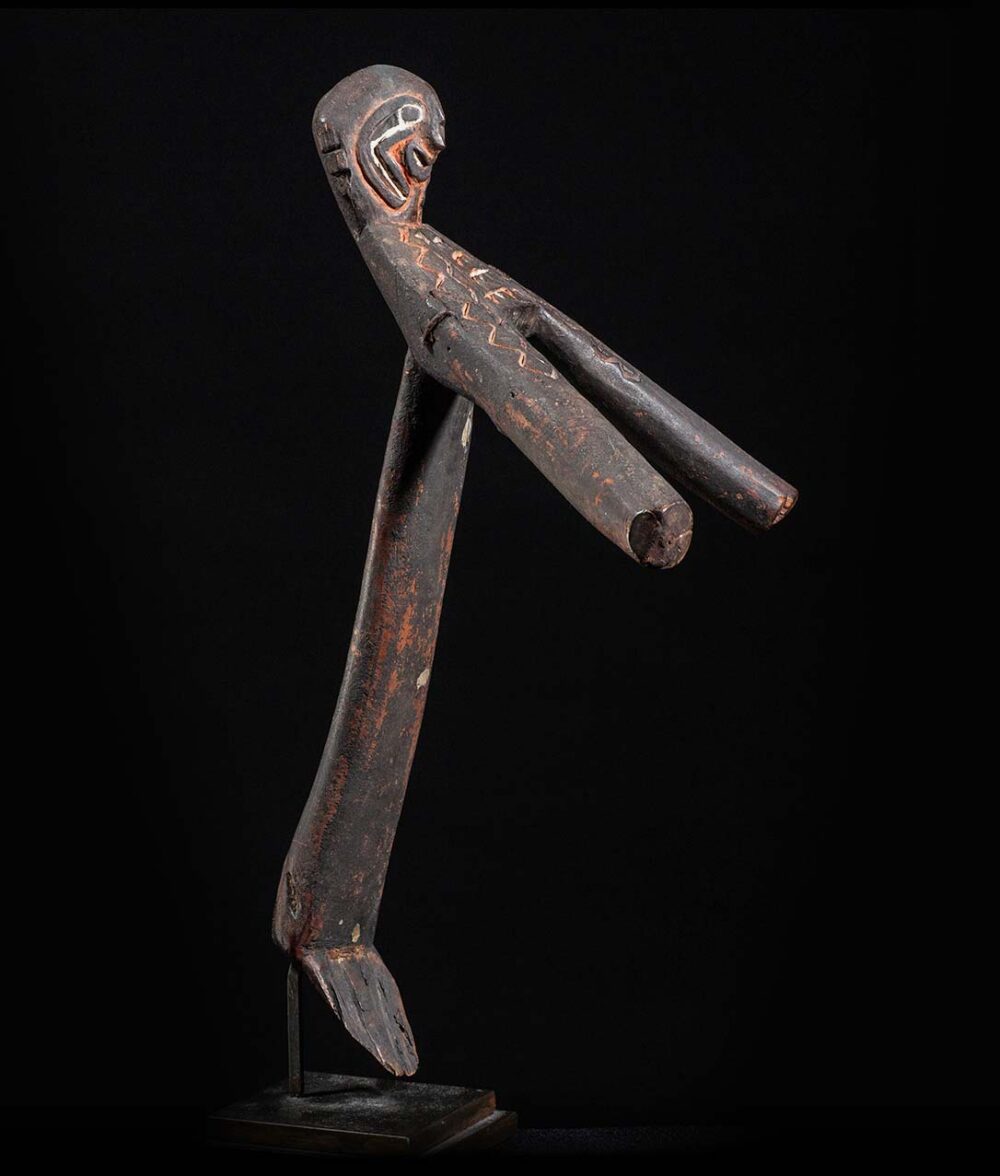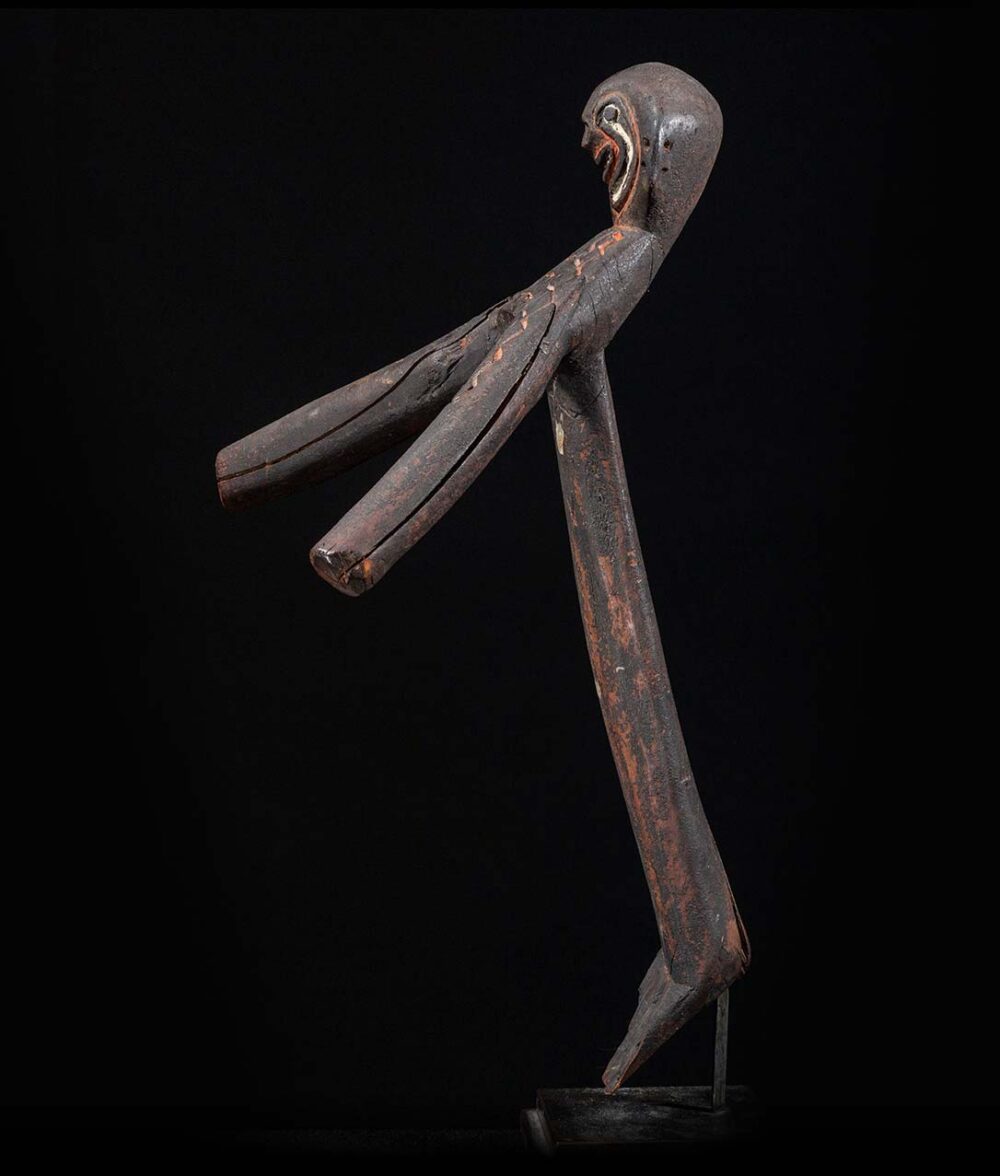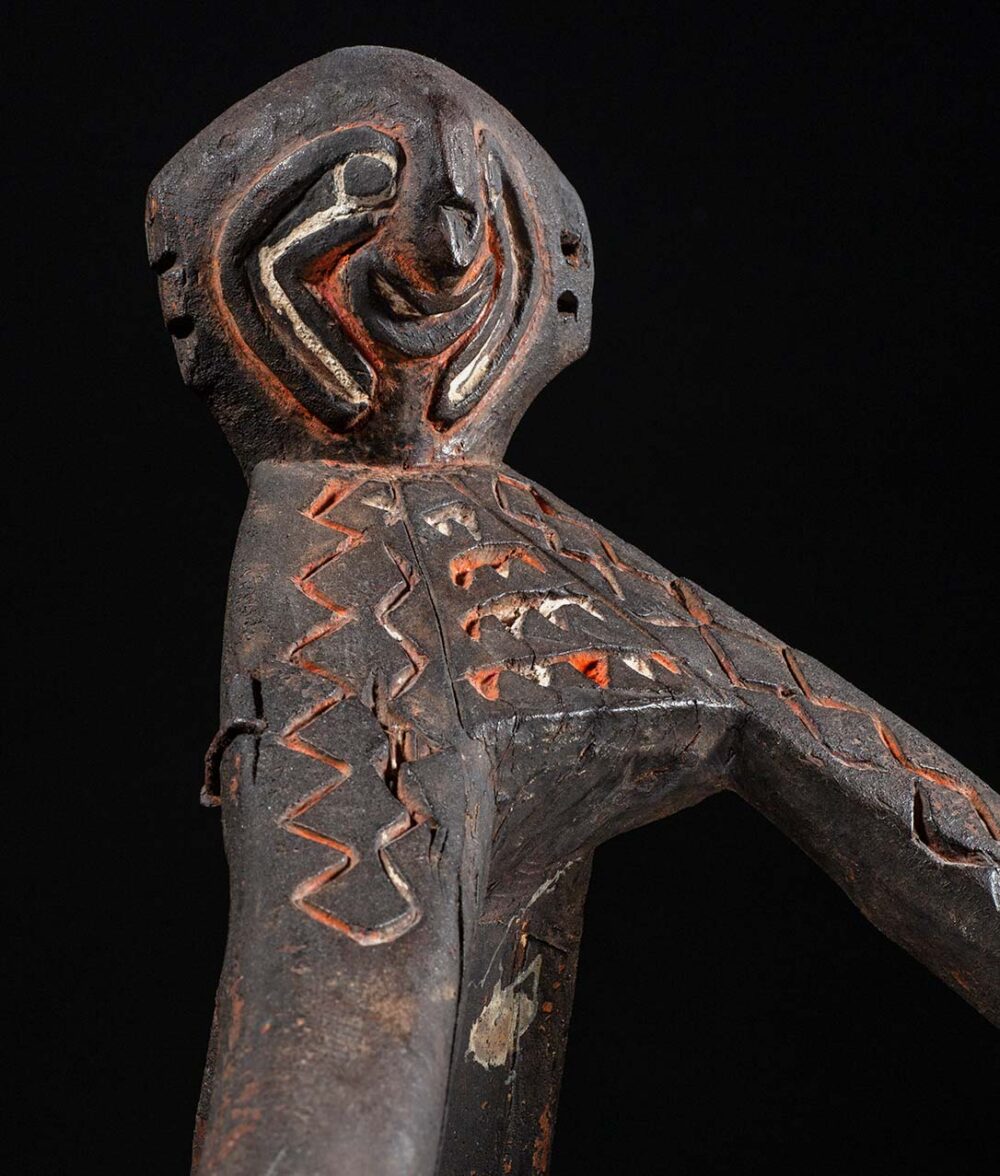Neck Rest
Urama Island, Papuan Gulf, Papua New Guinea
19th-Early 20th c
Provenance: Lynda Cunningham collection, NY
This wooden neck rest played a vital role in protecting the neck during sleep and was also a status symbol, indicating the owner’s social standing.
The Urama people were renowned for their exceptional wood carving skills, and this neck rest is no exception. It was carved from a single piece of hardwood, expertly crafted into a curved three-legged shape. At one end, it features a human head, and the surface is adorned with intricate patterns and symbols. These patterns were created using a variety of techniques, including chiseling, engraving, and burning, and were filled with colored natural pigments, adding to its aesthetic appeal.
Apart from being a functional object, this neck rest also held significant cultural importance. Its size and shape denoted the social status of the owner and were often passed down from one generation to another as a treasured heirloom. The neck rest’s ownership signified a family’s cultural identity, and it was highly valued as a symbol of social standing.
Neck Rest
Urama Island, Papuan Gulf, Papua New Guinea
19th-Early 20th c
Provenance: Lynda Cunningham collection, NY
This wooden neck rest played a vital role in protecting the neck during sleep and was also a status symbol, indicating the owner’s social standing.
The Urama people were renowned for their exceptional wood carving skills, and this neck rest is no exception. It was carved from a single piece of hardwood, expertly crafted into a curved three-legged shape. At one end, it features a human head, and the surface is adorned with intricate patterns and symbols. These patterns were created using a variety of techniques, including chiseling, engraving, and burning, and were filled with colored natural pigments, adding to its aesthetic appeal.
Apart from being a functional object, this neck rest also held significant cultural importance. Its size and shape denoted the social status of the owner and were often passed down from one generation to another as a treasured heirloom. The neck rest’s ownership signified a family’s cultural identity, and it was highly valued as a symbol of social standing.



